If there is one destination that you must see in Jordan, no matter what, on any itinerary through this country, that is, without a doubt, Jerash (or Gerasa), an ancient city in the northwest of the country, considered one of the best-preserved Roman cities in the Near East.
It was one of the ten cities located in the eastern confines of the Roman Empire (in the present-day Jordan, Israel and Syria) that formed the Decapolis, and, being close to Amman, it can be visited in one day and be back to the capital for the night.

If you prefer, you can also stay overnight in Jerash itself, a good idea especially if you plan to continue travelling through northern Jordan towards Umm Qais, Pella or Ajlun.
As we mentioned earlier, Jerash is less than an hour from Amman. You can rent a car to travel around the country like we did, and get to the ruins of the city on your own.
If you don’t have or want a car, you can always book a private tour to Jerash, Ajloun Castle and Umm Qais. In the end, you know: it’s up to you!
Let’s talk a little about the history of Jerash first, a city that for centuries was hidden in the desert under the sand, and was discovered after several excavations. According to experts, it was inhabited since 3200 BC and different civilizations passed through it over time.

In 63 BC, Jerash was conquered by the Romans and became one of the most important cities in the Empire. It prospered during the 1st century and had a great commercial activity, benefiting from its privileged location, so it reached its Golden Age between 98-117 AD.
During the Byzantine Empire, the city also flourished, but, following the Persian invasion in 614, it experienced a rapid decline. The city eventually became uninhabitable after a series of earthquakes in the 8th century.
Despite this, its archaeological remains are very well preserved, and today it is one of the most popular tourist destinations in Jordan for those who do not only want to focus on Petra and travel north to admire Imperial Rome.
Among all the ruins of the Jerash archaeological complex, one of its icons is Hadrian’s Arch, built in 129 AD. It is the first structure that visitors see when entering the city from the south, and it is impressive. It has an imposing 13-meter-high arch, and for this reason it is also known as the city’s triumphal arch.
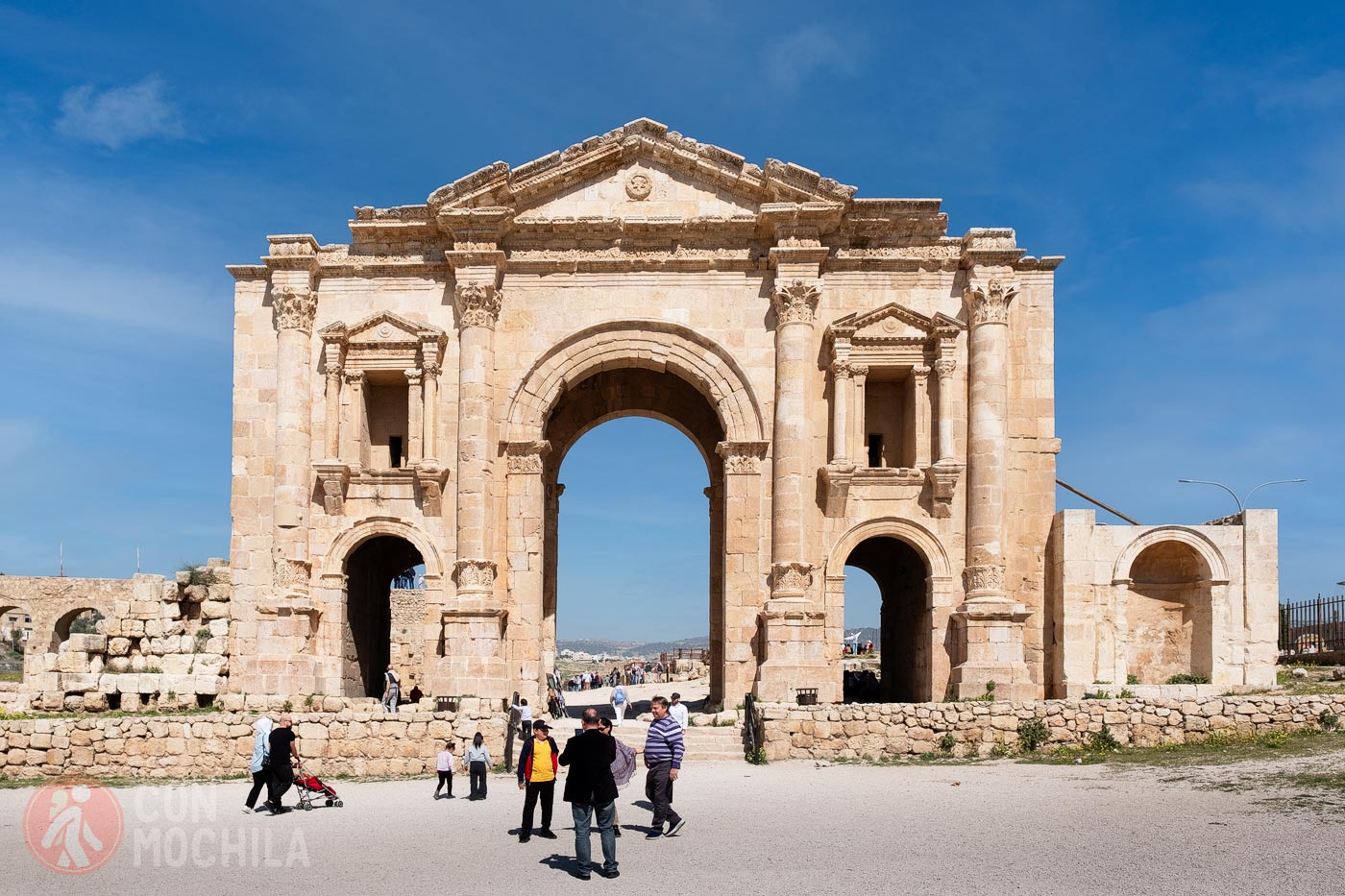
It stands out for its architectural features, its unconventional decorative elements and its 21 metres in height. It was recently restored between 2005 and 2007.
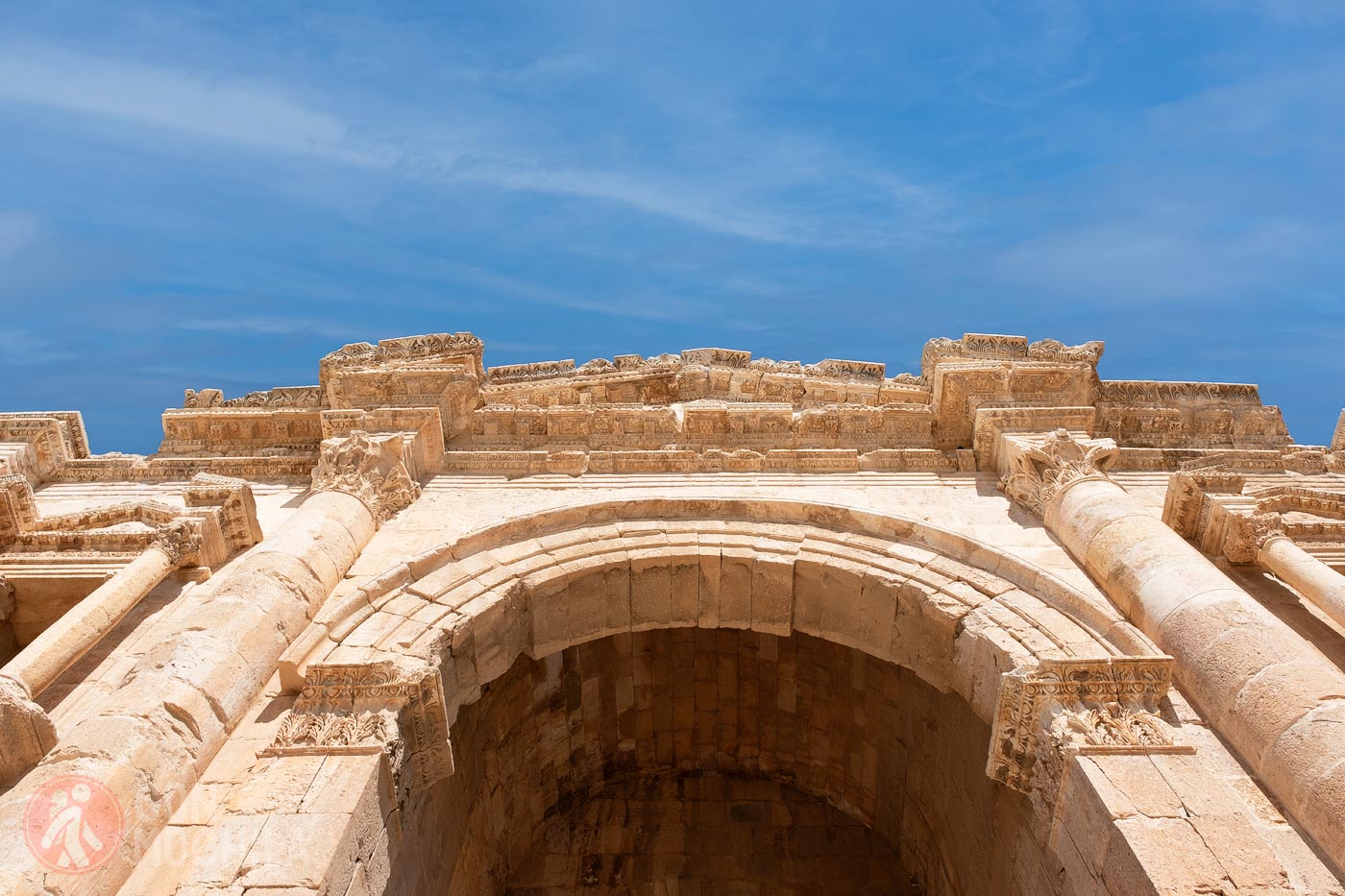
It has three vaulted corridors on the inside and an attic at the top, which is believed to have had a dedicatory inscription.
Once you pass through Hadrian’s Arch, on the left you can see the Hippodrome. With a capacity of 15000 spectators, it was used for public celebrations.
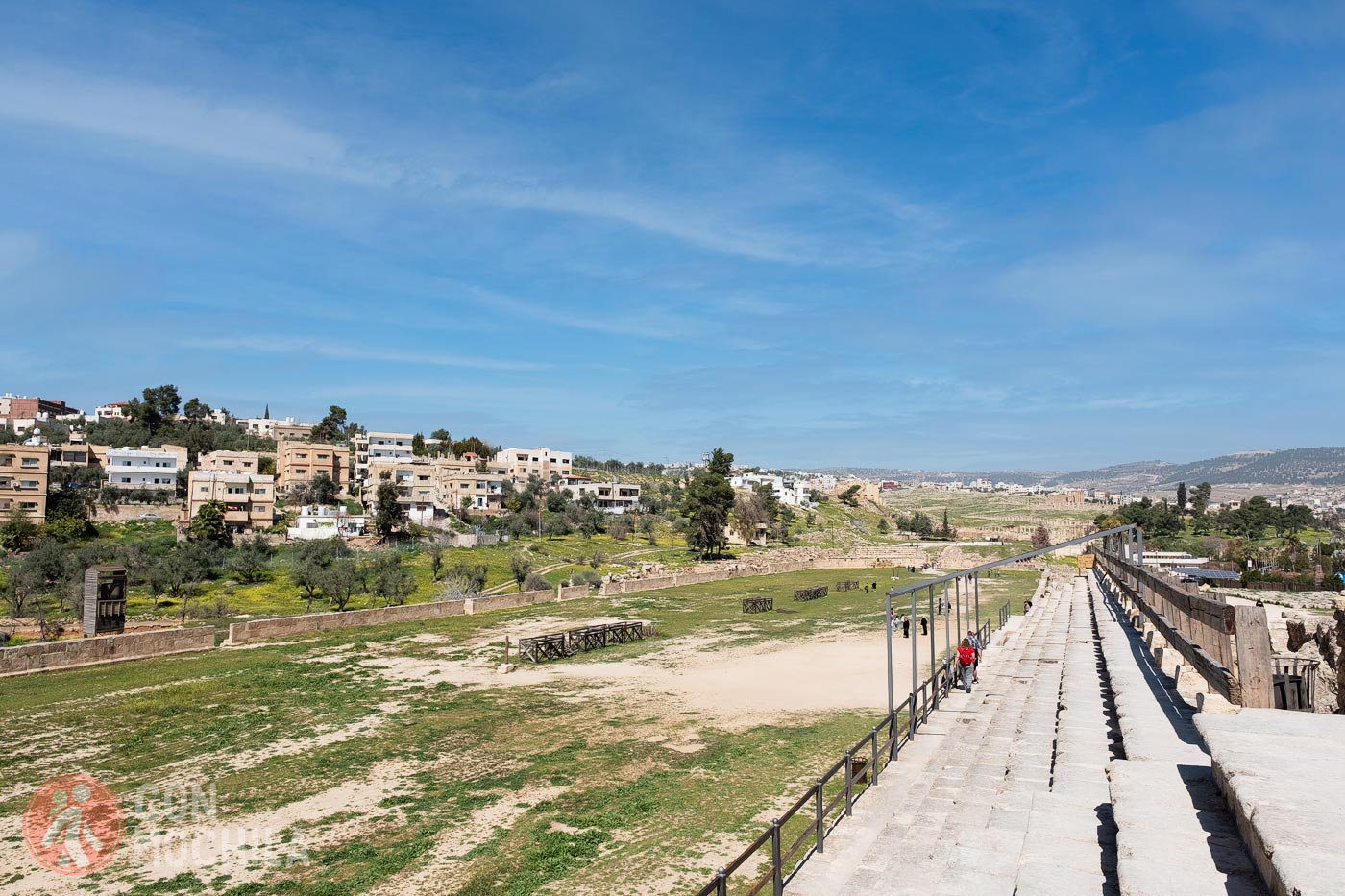
The Roman Hippodrome of Jerash was built between the 2nd and 3rd centuries AD, and today, although many of the stands have disappeared, it is possible to clearly see what once existed. In fact, it is one of the best preserved sites in all of Jerash.
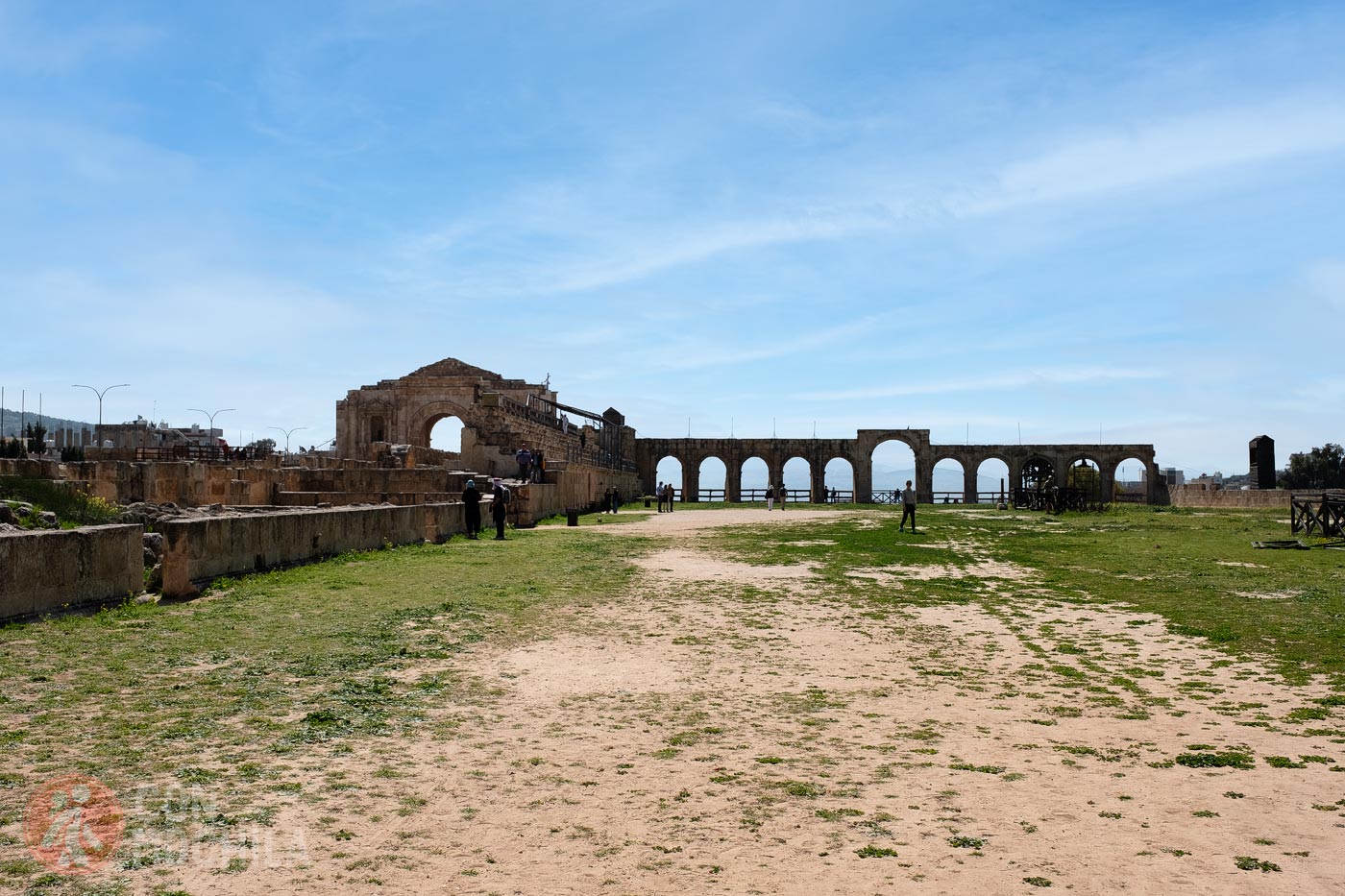
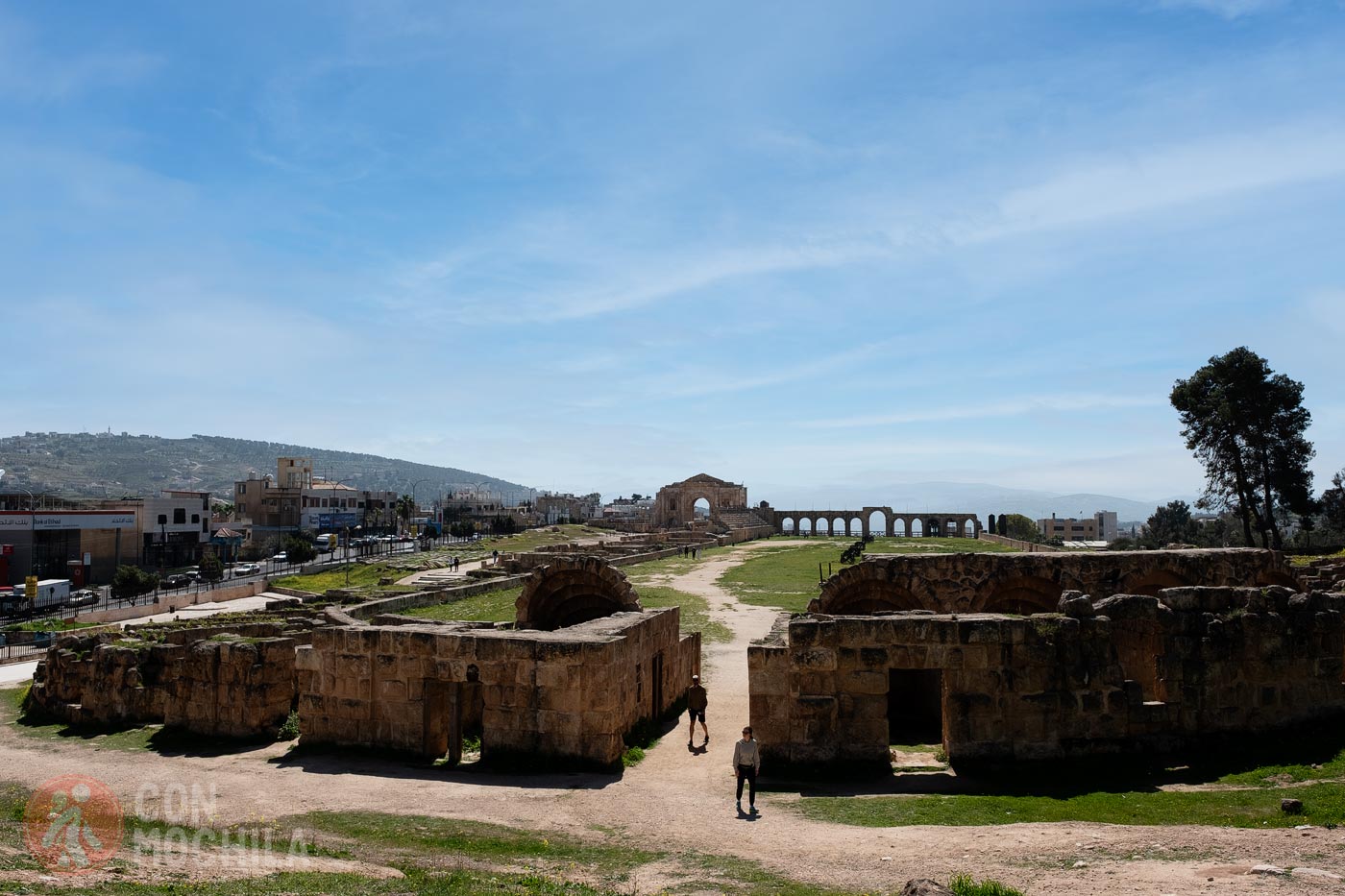
Apparently there are occasional shows consisting of Roman-style chariot races and gladiator fights to entertain visitors, but we did not witness them.
The South Portal, like the later and much larger Hadrian’s Arch, was built in honour of the Roman Emperor Hadrian during his visit to Jerash in the winter of 129/130 AD.
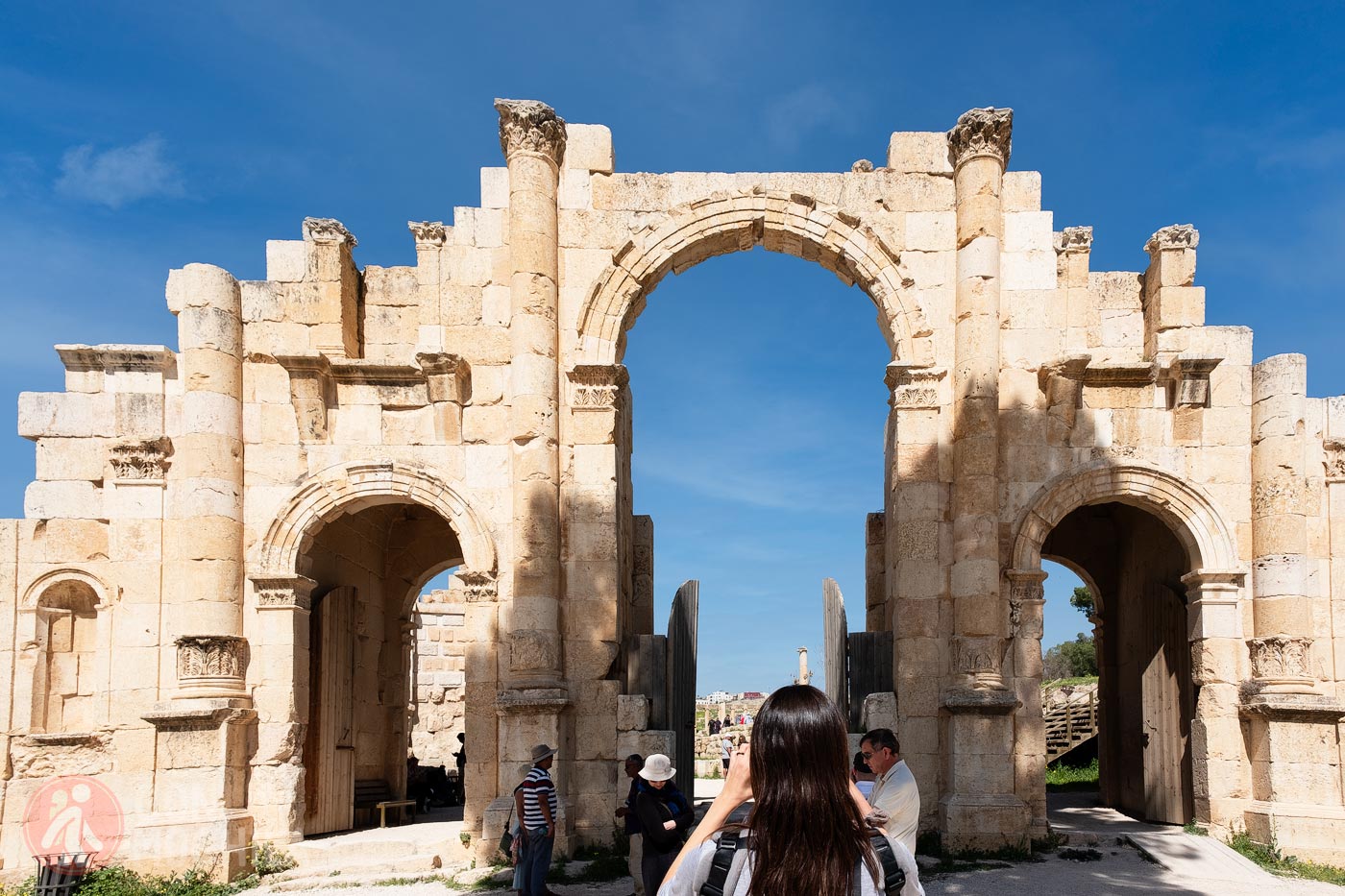
Once you cross this portal, you can see other ruins, such as a row of souks consisting of 15 workshops and shops, which was erected around 110 AD. The craftsmen working here included carpenters, potters and at least one bronze founder
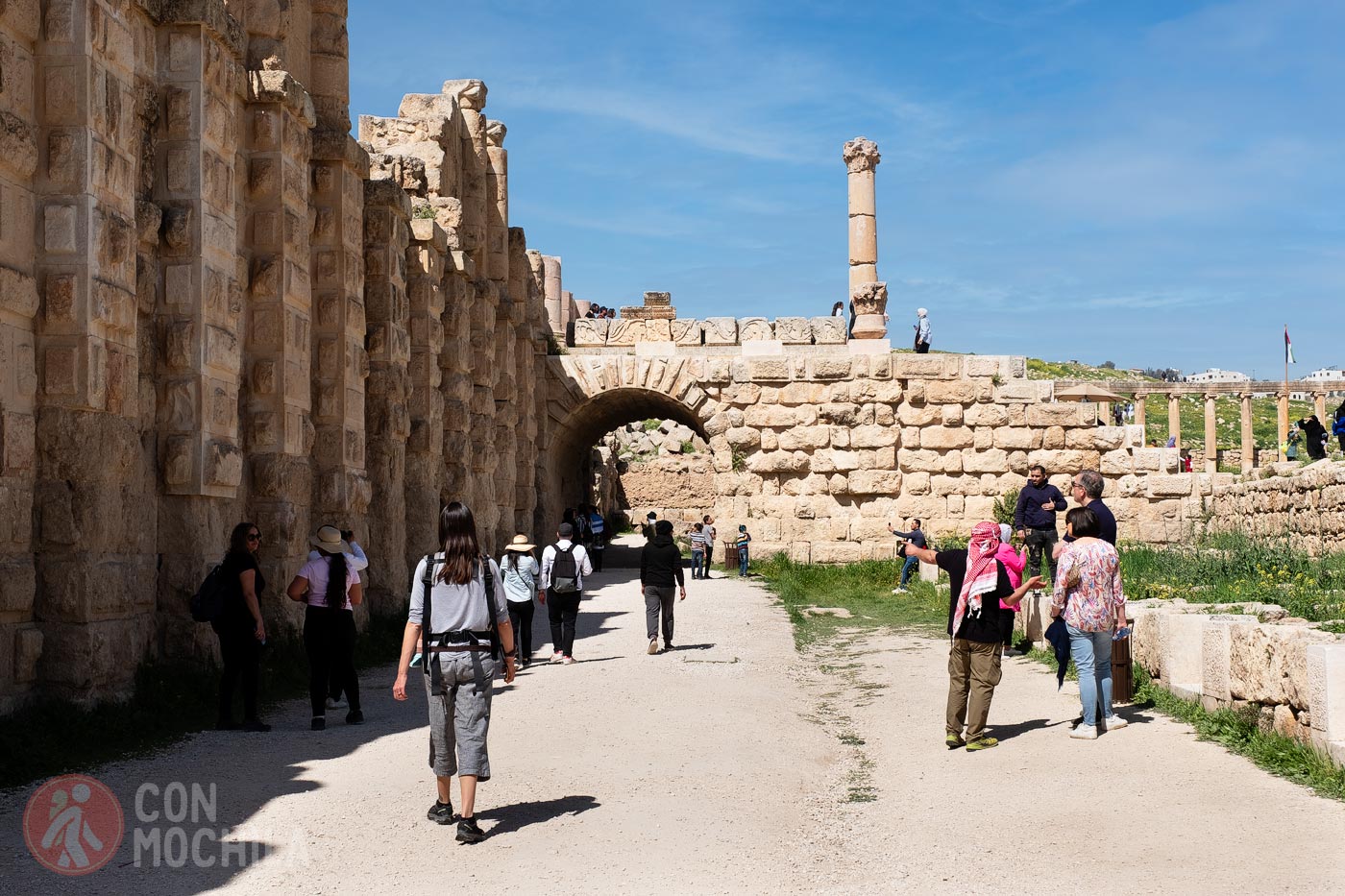
Built in honor of this god between 161-166 AD, the Temple of Zeus is one of the most outstanding monuments in Jerash.
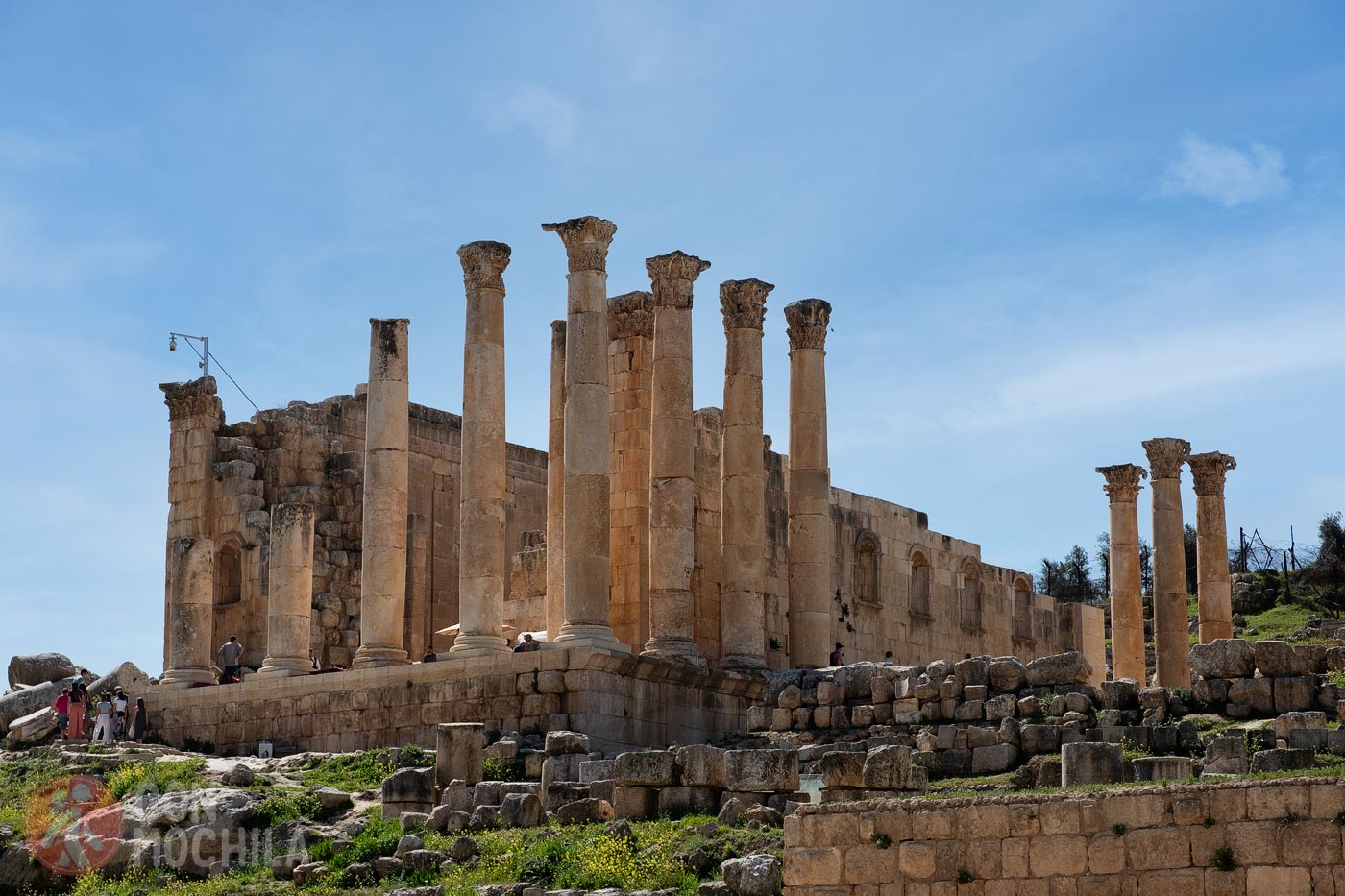
It is located adjacent to the Oval Plaza, where there is a staircase that allows access to the square portico, which was composed of 8 columns. After passing through it, one can access the sacred area, known as Temenos.
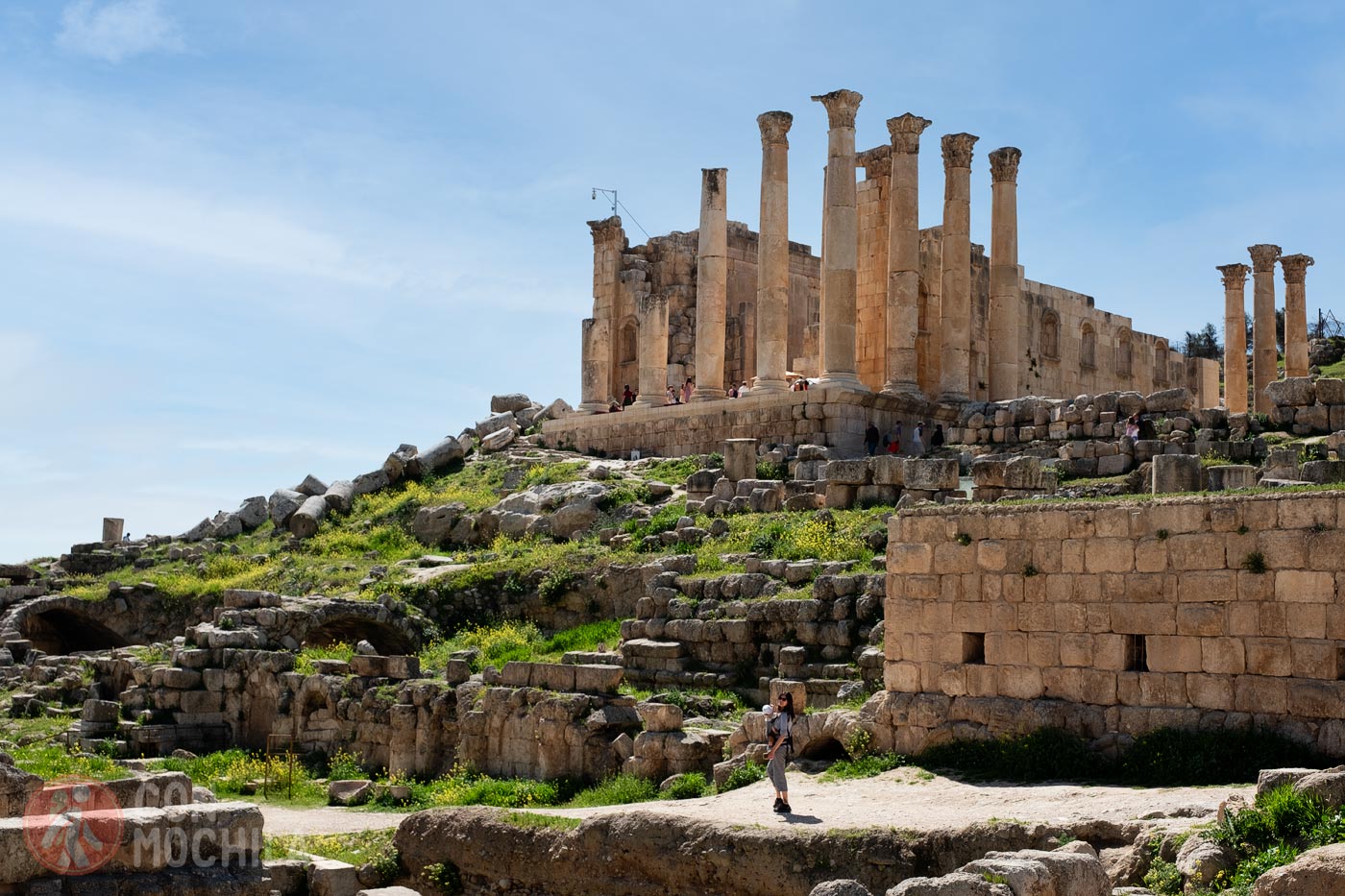
Although the earthquakes damaged the building, certain elements such as the columns and walls that were part of this imposing temple located on the top of a hill can still be seen.
The Maximus Theatre is the largest and oldest one in Jerash. Built between 81-96 AD, it was used for musical performances, theatrical performances and poetic contests. It is also possible that it was used for cult purposes.

It was designed to hold 5,000 people in its stands, and the inhabitants of Jerash constantly attended the different events that took place there.
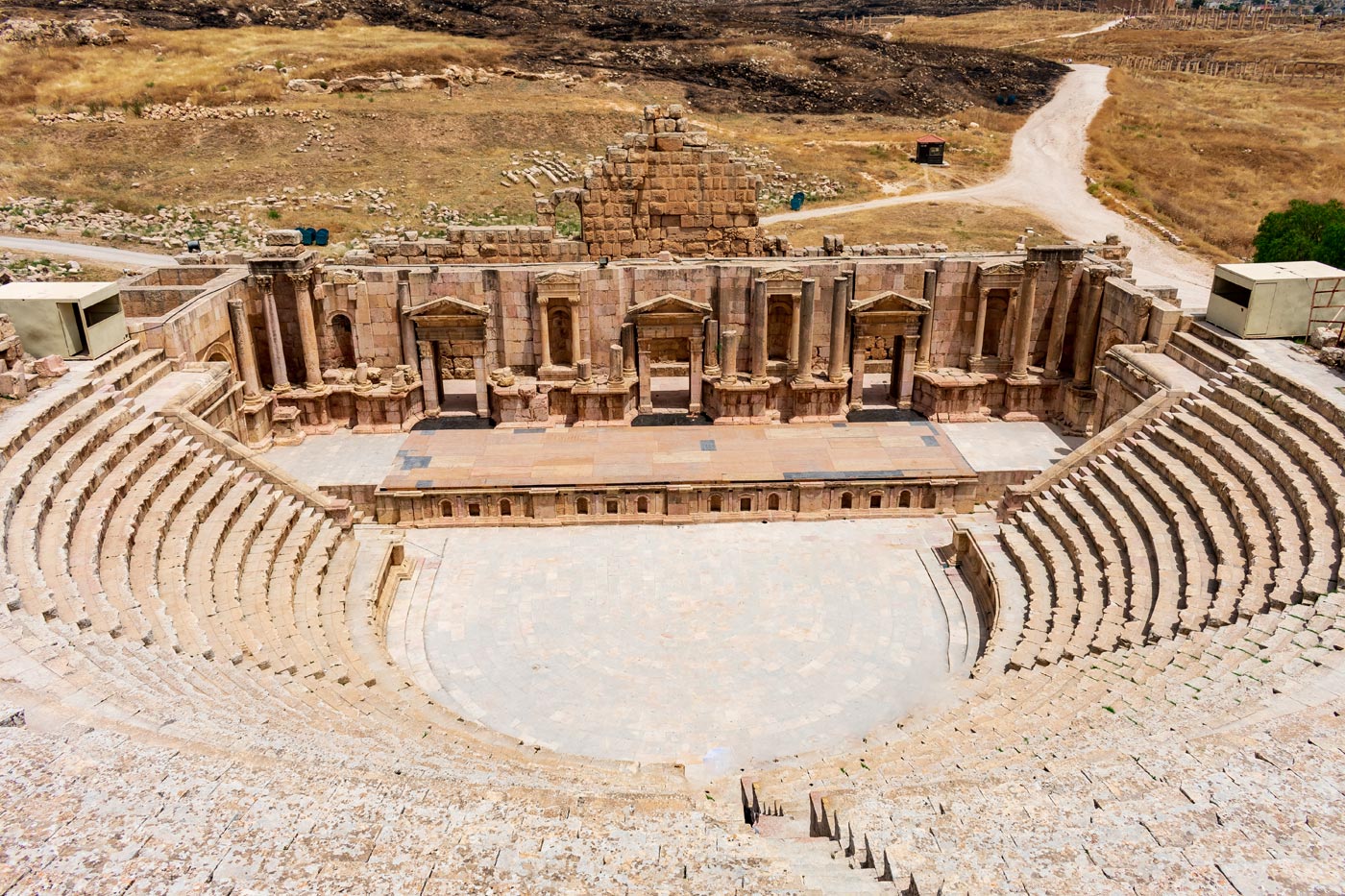
Due to its design and construction, the place had perfect acoustics. This can be witnessed in the bagpipe shows that are held here from time to time.
As its name suggests, the Oval Plaza, also known as the Roman Forum, has a unique elliptical design, making it one of the finest works of Roman architecture.
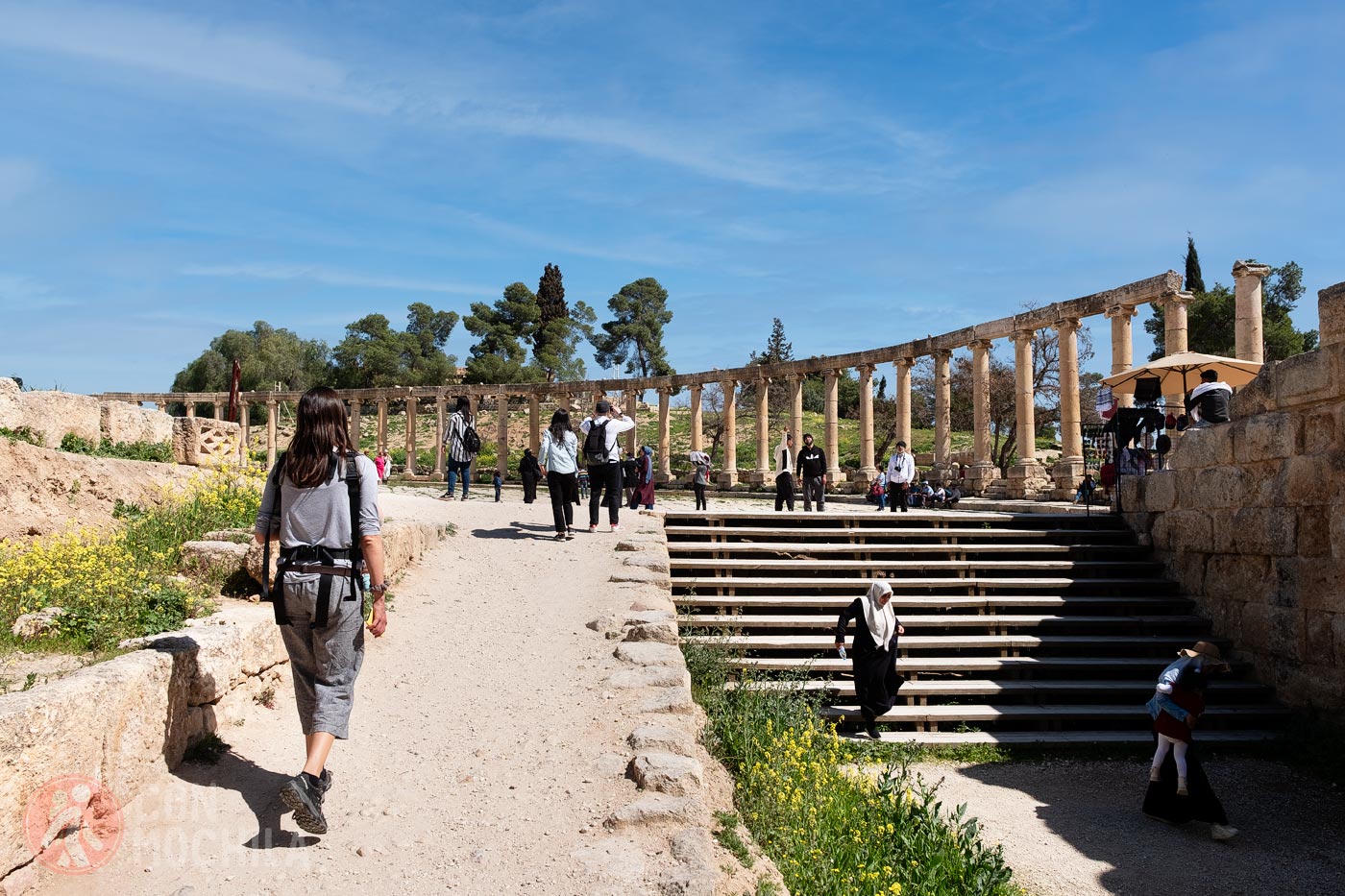
Measuring 90 metres long and 80 metres high, this impressive plaza connected the main roads of the city. Today, it is very well preserved, and its 56 elegantly curved columns define its space.
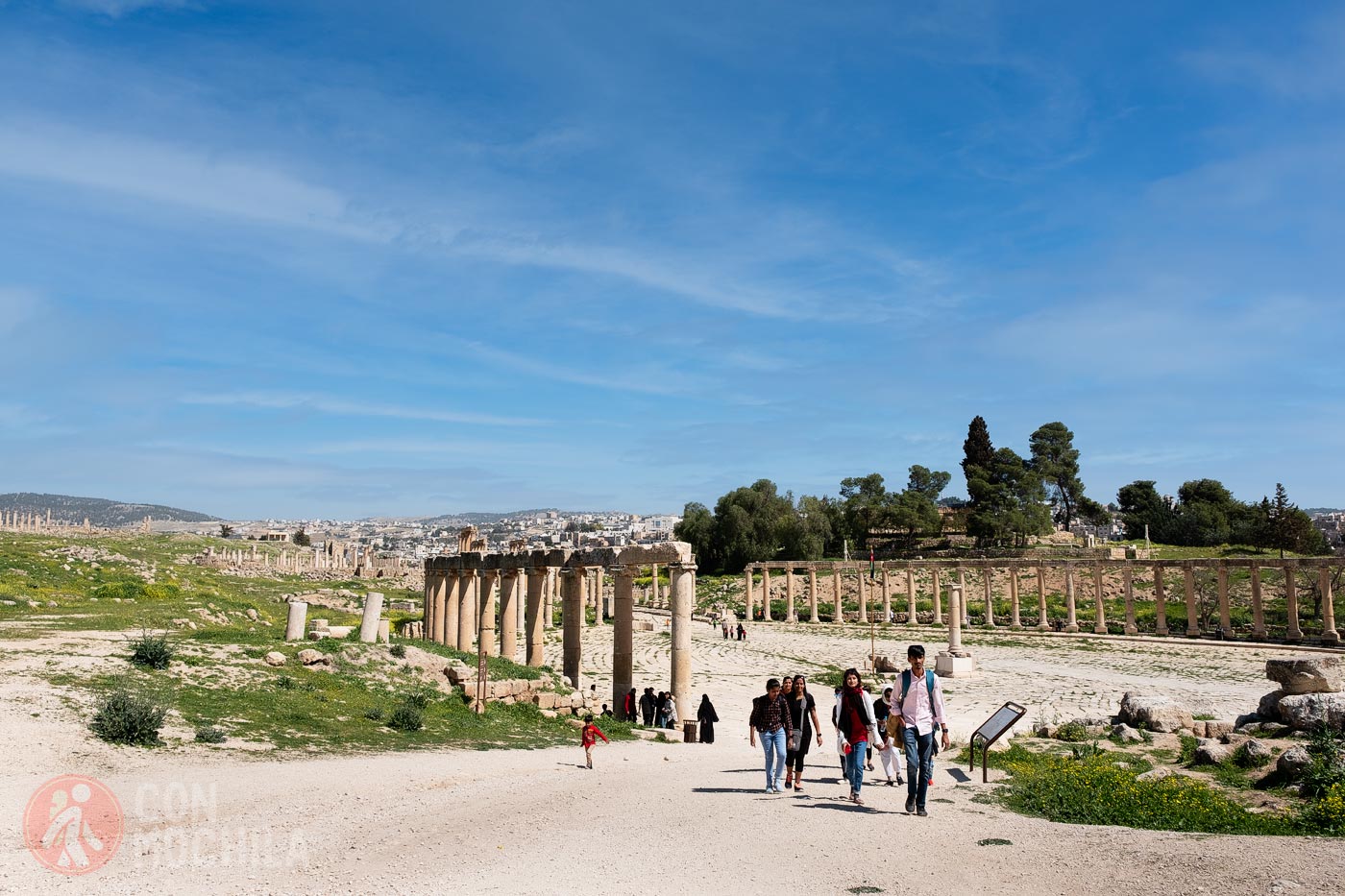
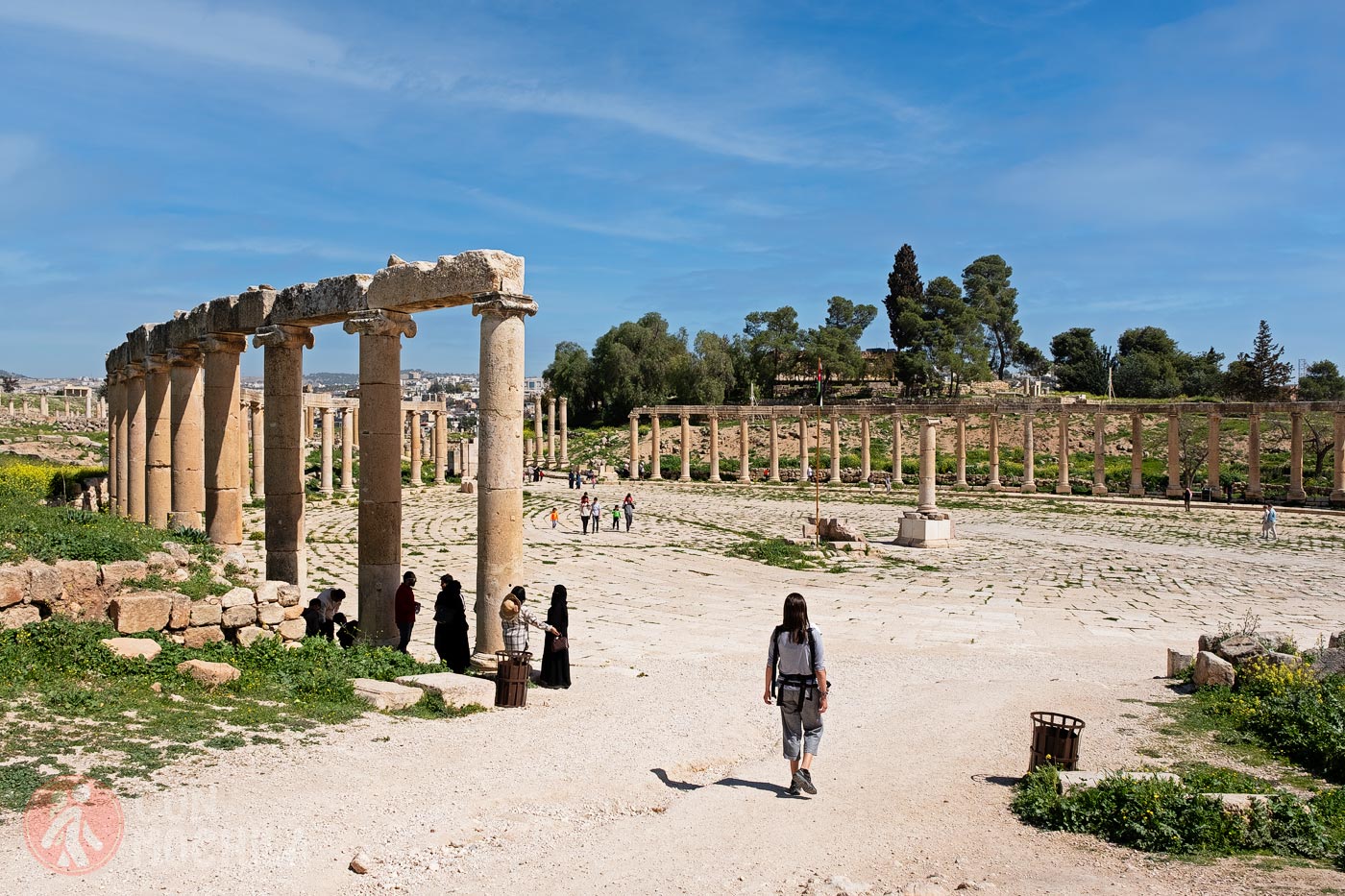
The Oval Plaza is estimated to have been built in 130 AD, and was a complicated task due to the depression of the terrain on which it is located.
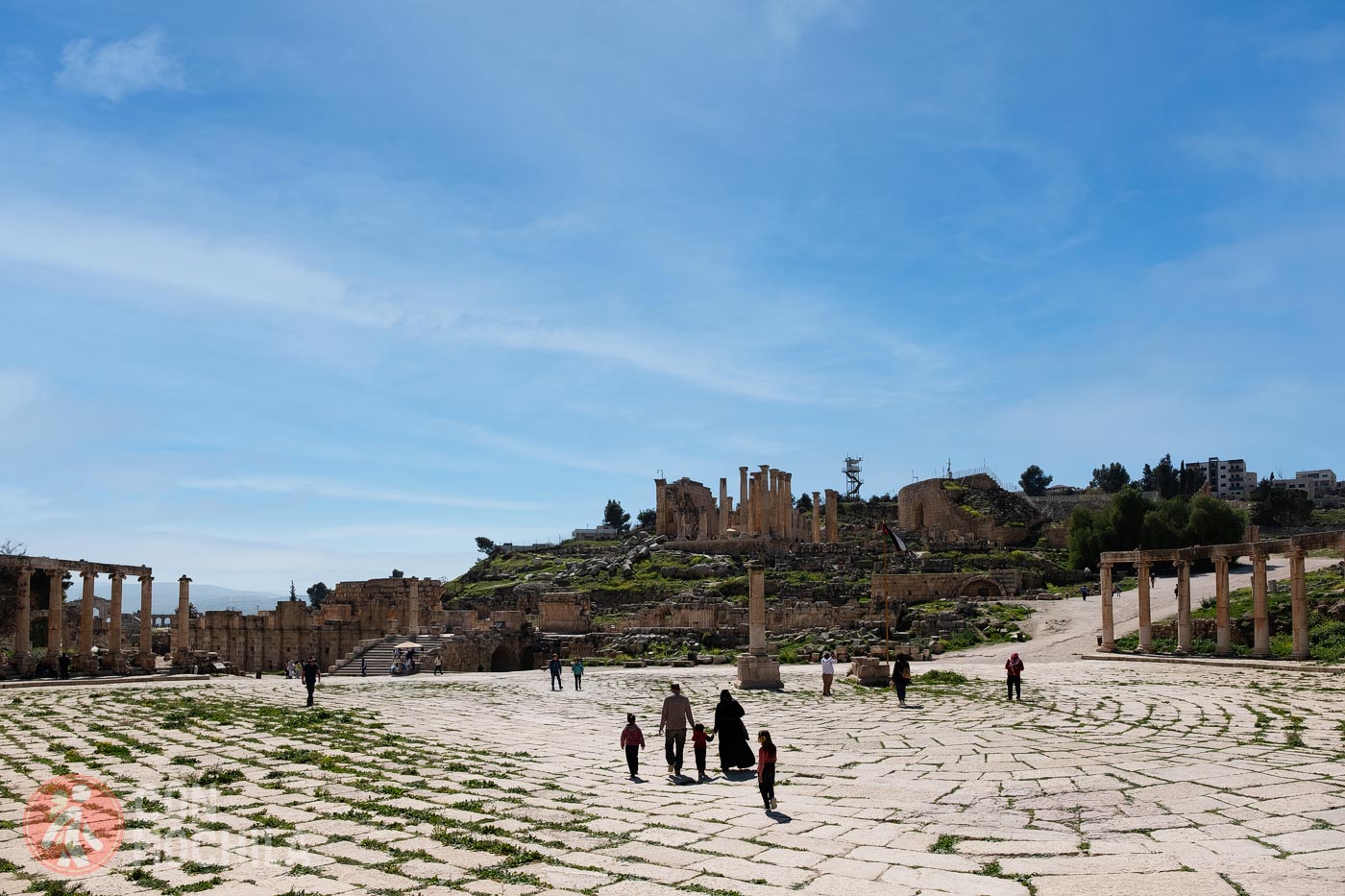
Starting from the Oval Plaza, there is the main street of Jerash, known as Cardo Maximus. It stretches for 800 meters to the North Gate.
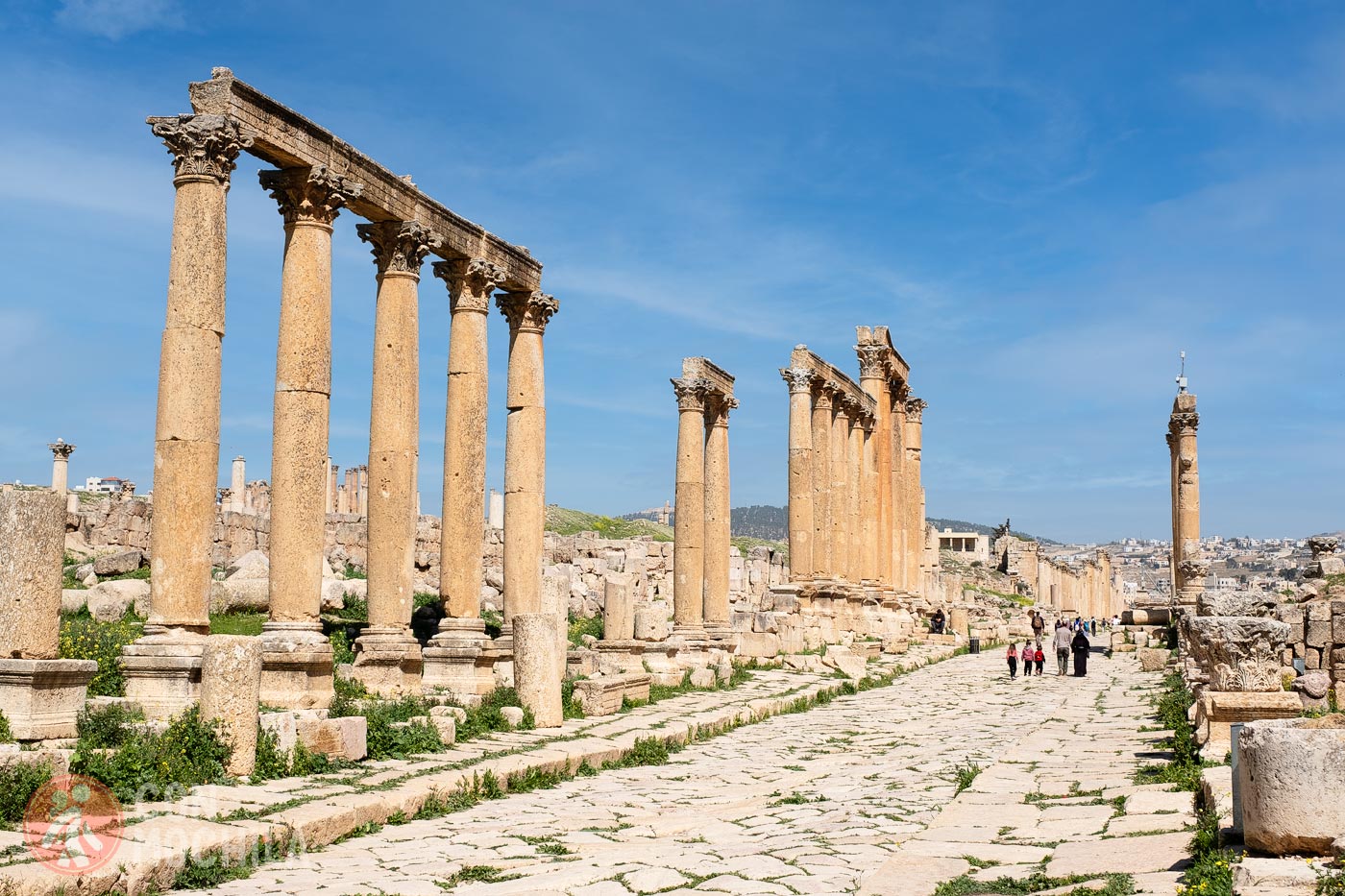
Walking along the Cardo Maximus, you can see various structures that are ruins of buildings in the city. These include the Macellum, which was the market where food was sold, and the South Tetrapylon, which is a Hellenistic monument composed of four gates.
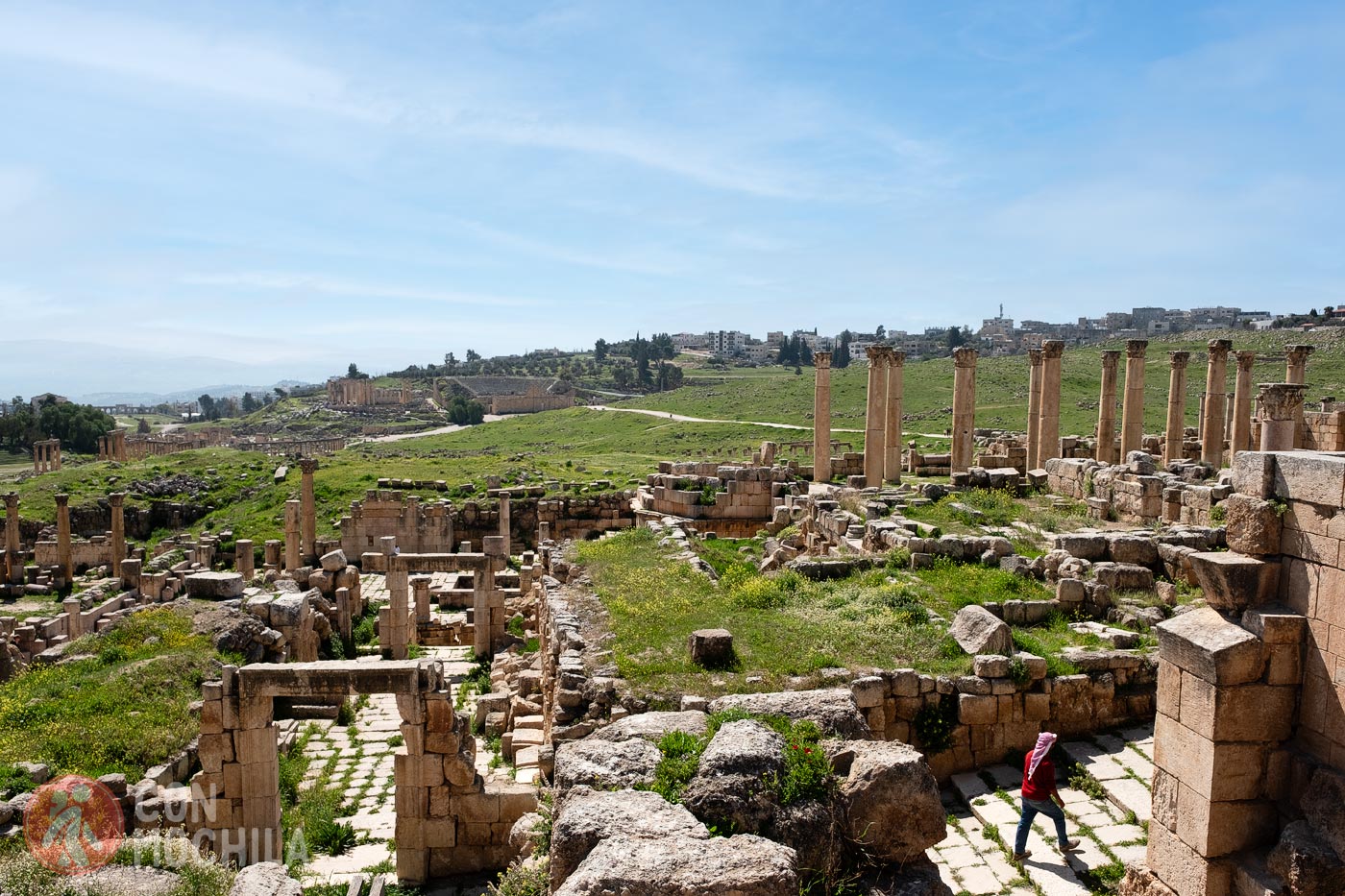
Surrounded by columns and remains of ancient buildings on both sides, one is transported to the Empire while walking along one of the longest and best-preserved Roman streets.
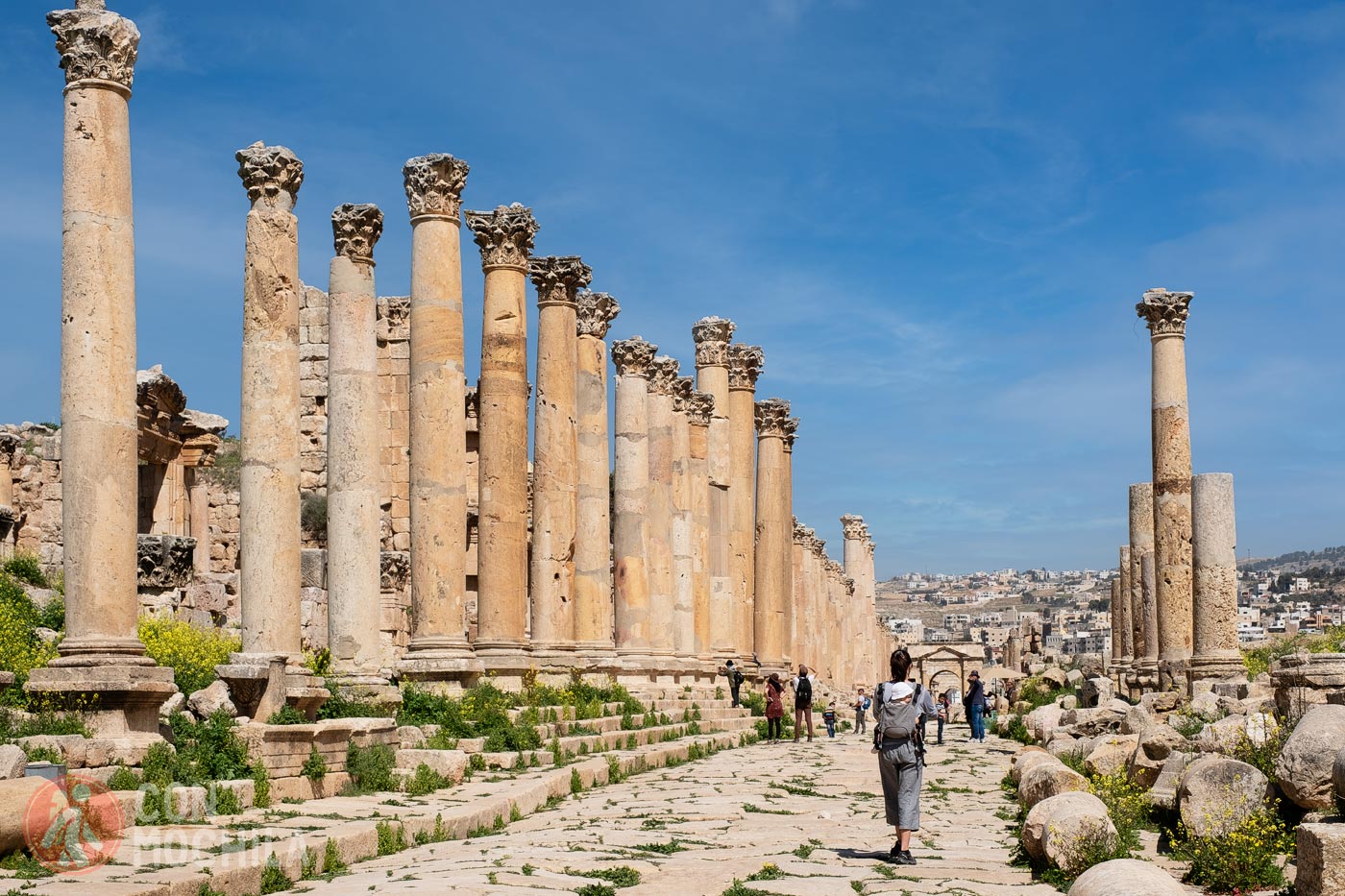
It is the oldest temple in Jerash, erected in the early 5th century on the foundation of a 1st/2nd century AD sanctuary that had been devastated and abandoned for a time.
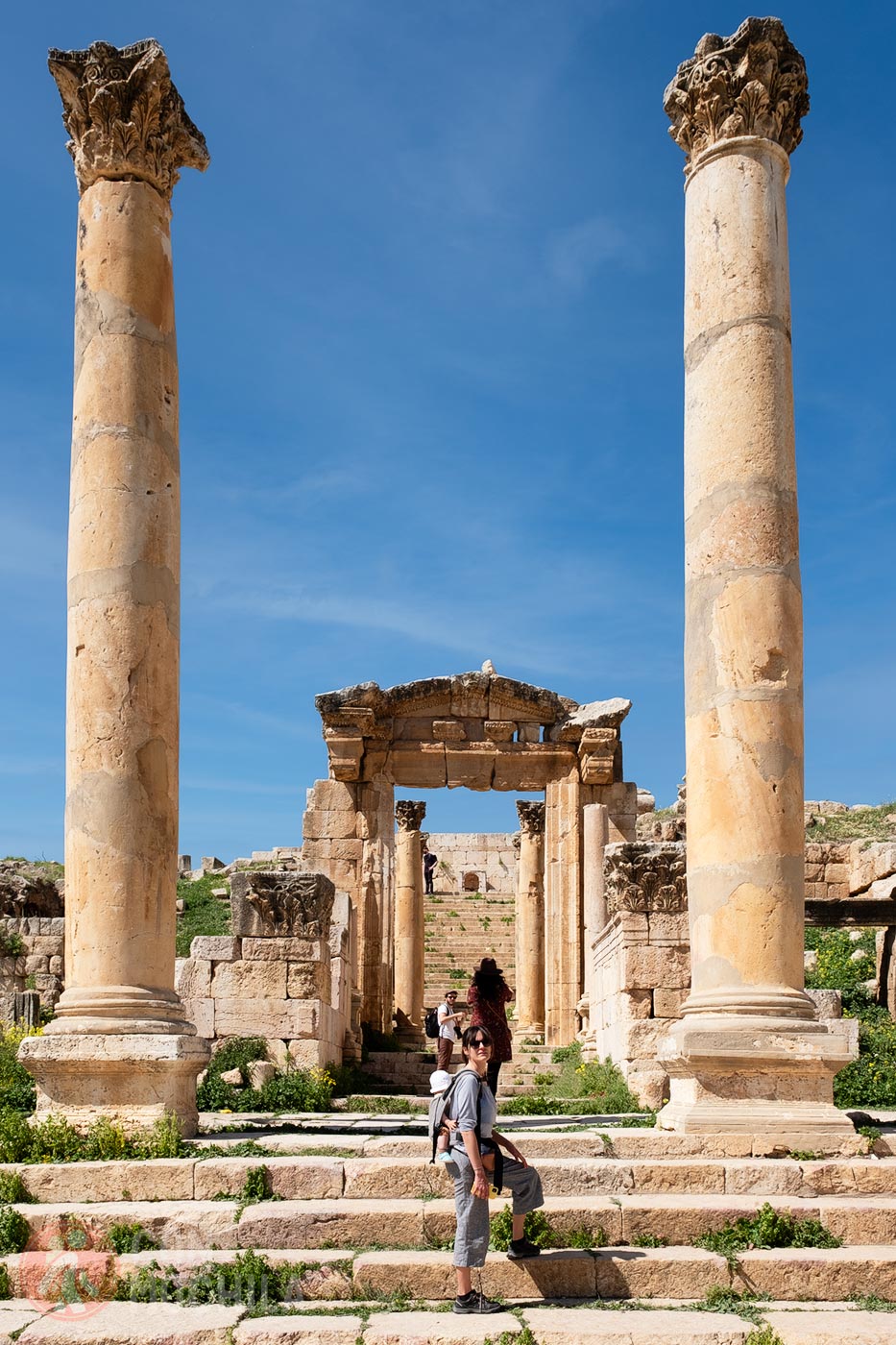
The Nymphaeum was the city’s most important fountain. Its construction began in response to the city’s need for water supply as it expanded. It was completed in 191 AD and was located next to the temple of the nymphs, who were the Goddesses of Nature.
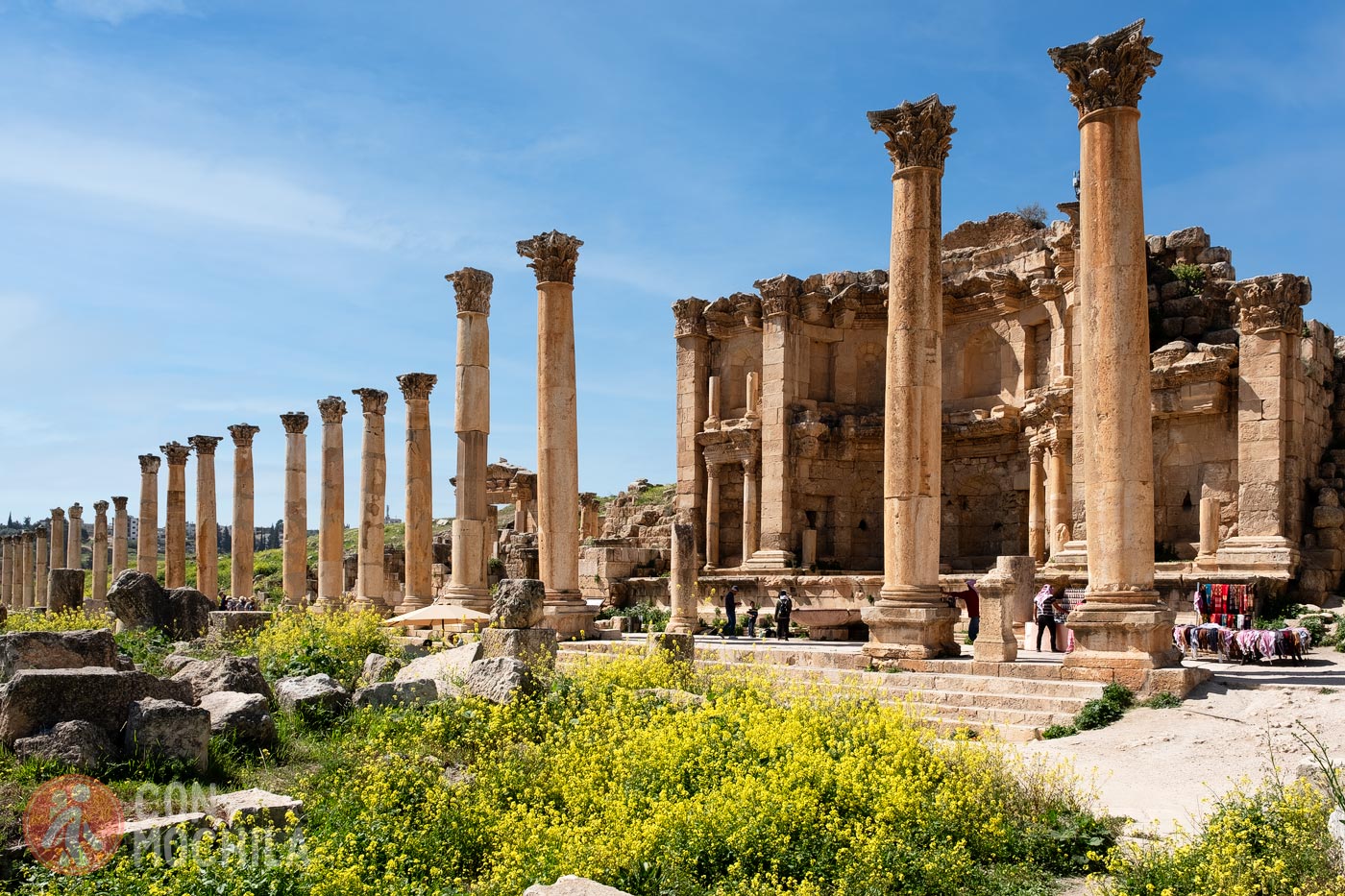
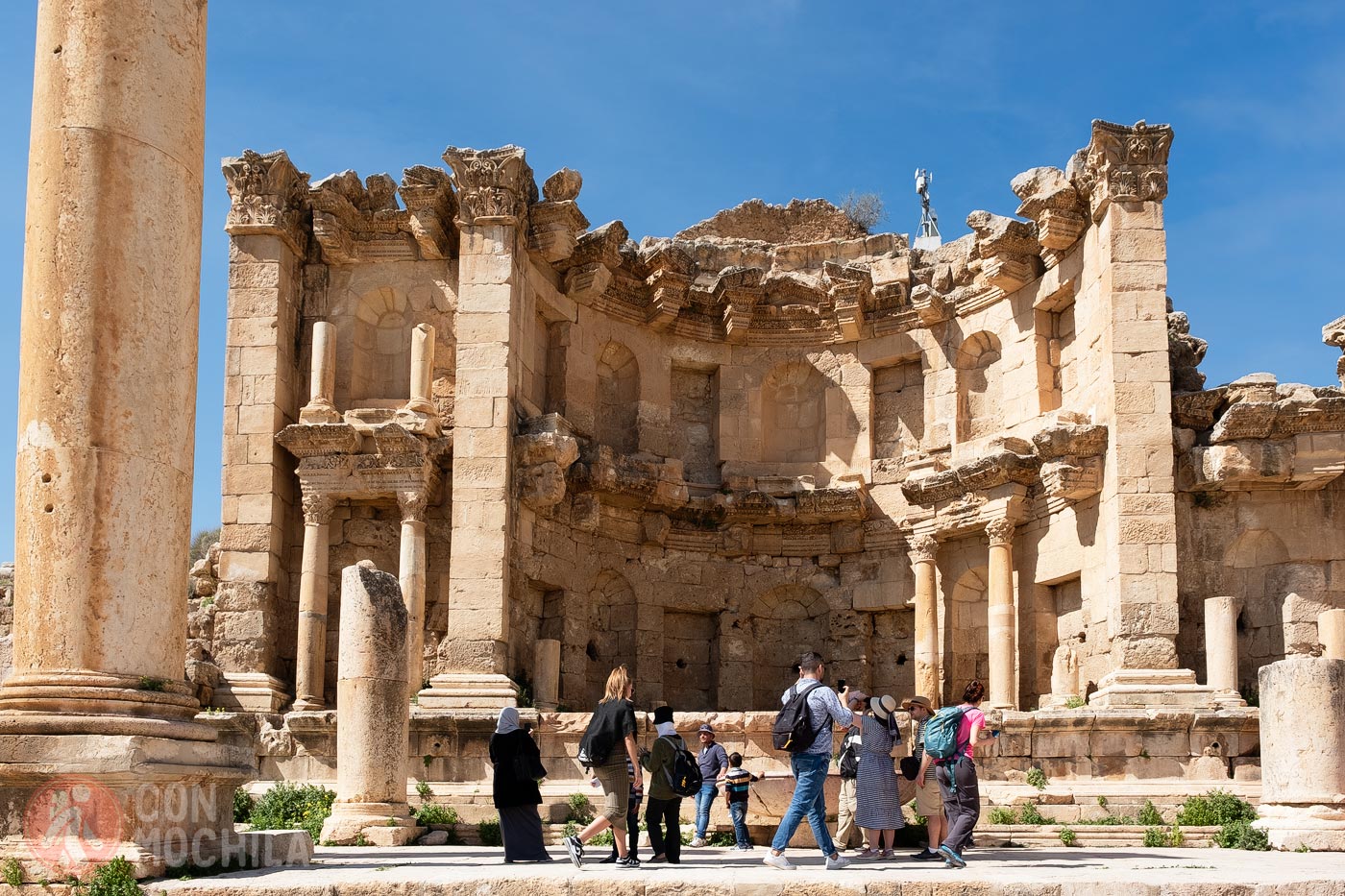
The Temple of Artemis, built in honor of this goddess, considered the protector of Jerash, is located at the highest point of the city.
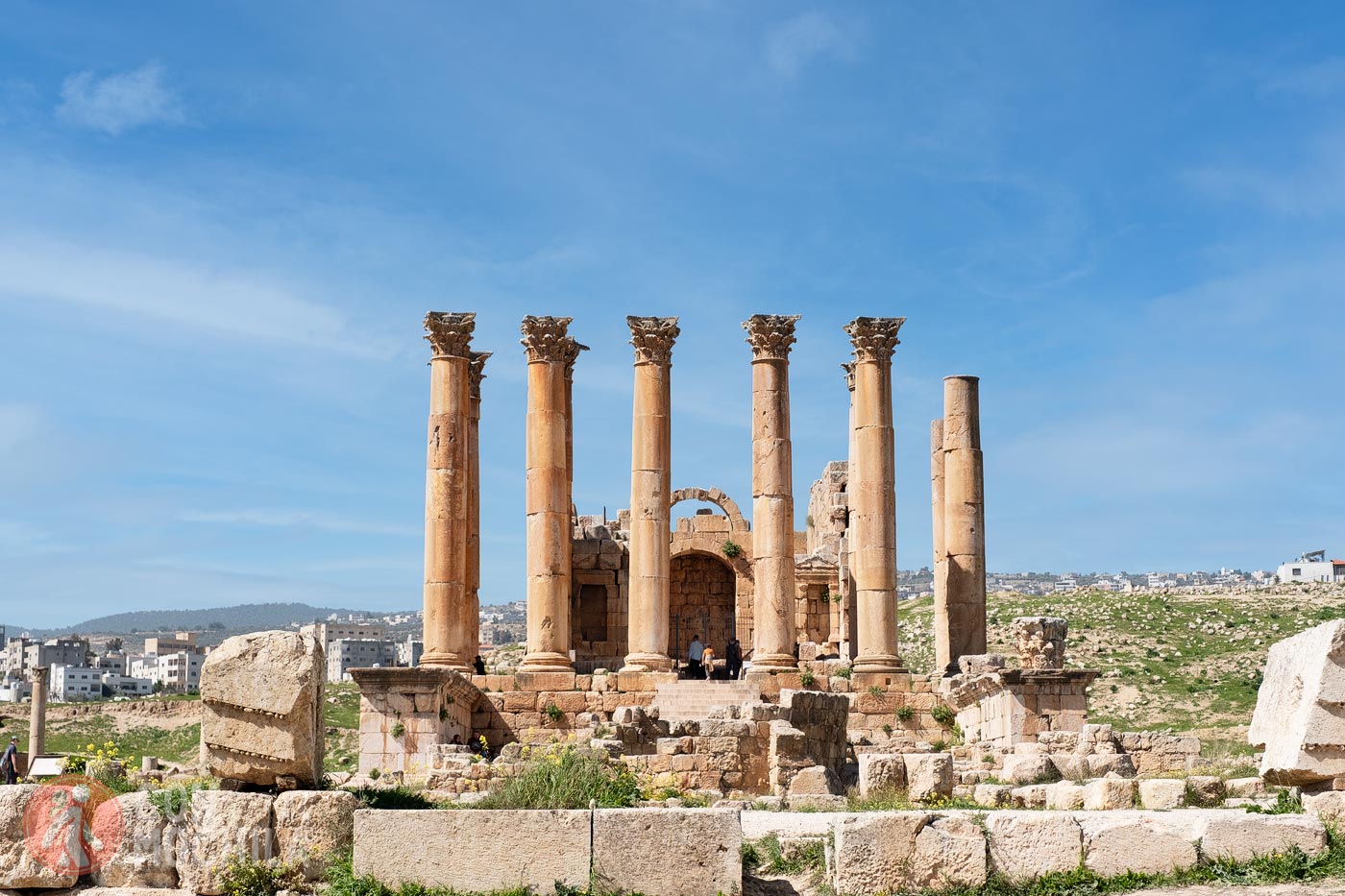
It is believed to have been built during the 1st century and is still very well preserved today, as eleven of the twelve decorated and stylized columns of the portico are still standing.
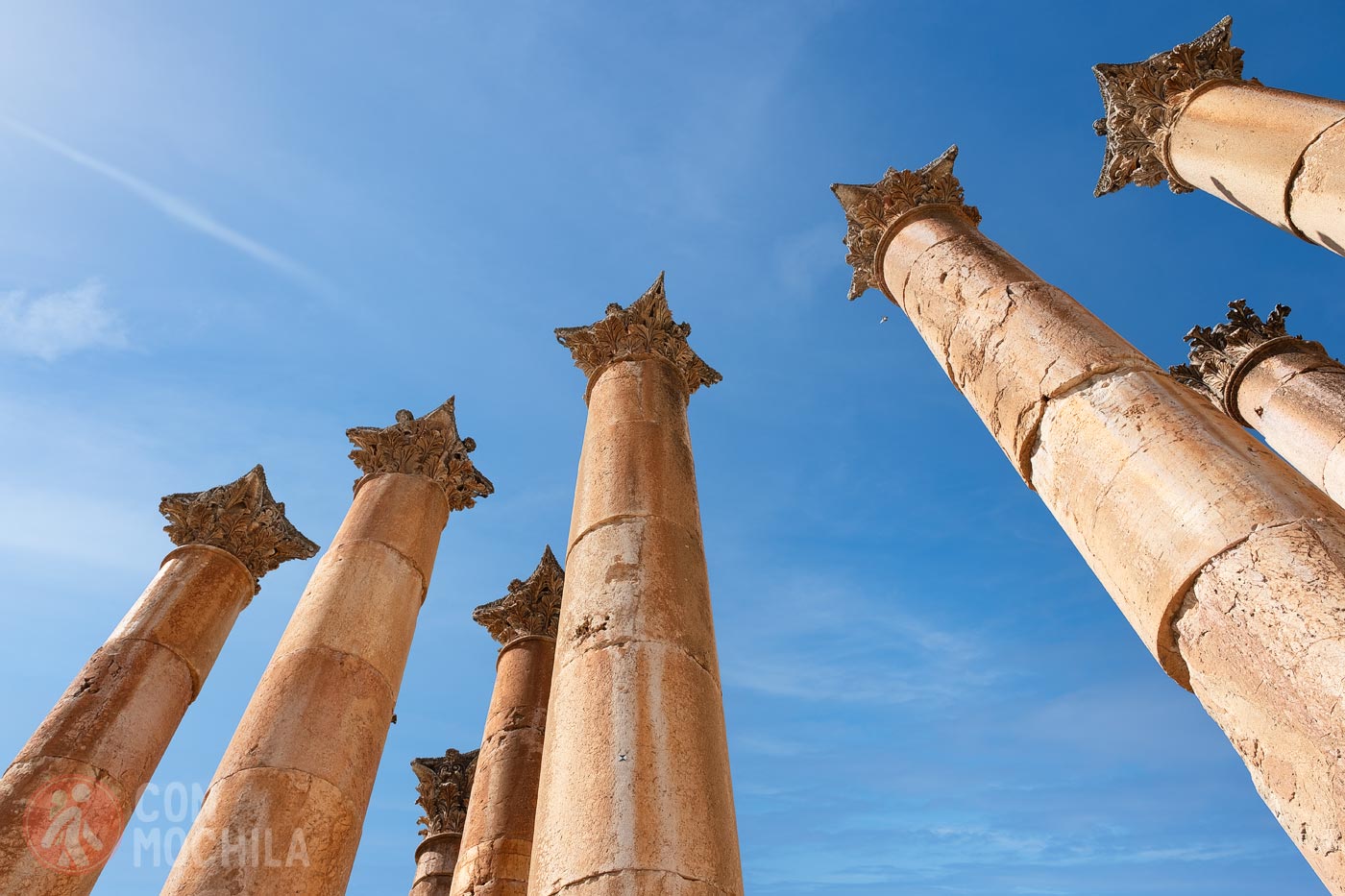
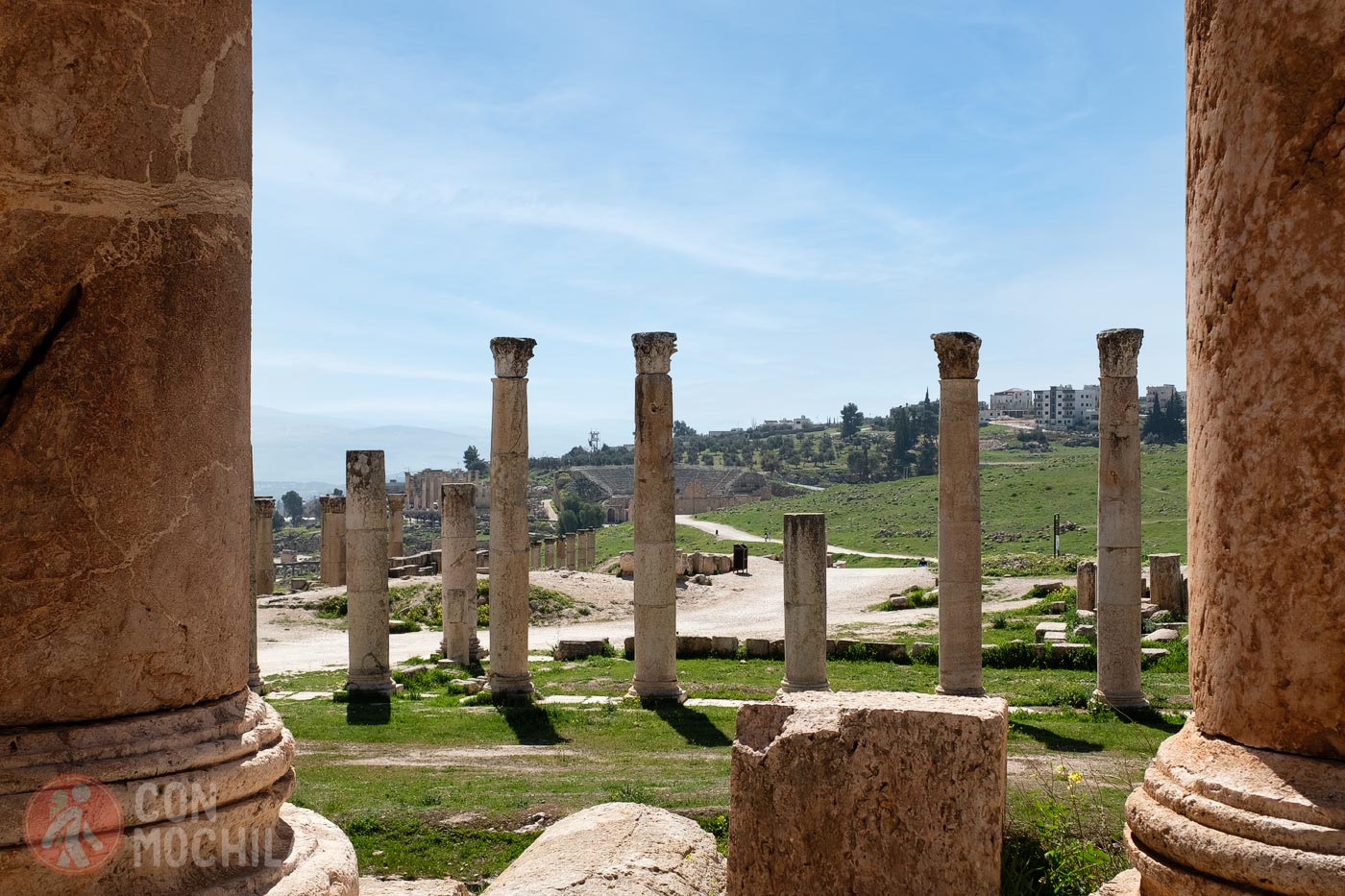
The inhabitants of Jerash felt great devotion to Artemis, so the temple was covered in marble and had a profusely decorated statue of the goddess.
The North Theatre was built in the 2nd century, and was the venue for performing arts shows. Originally, the North Theatre only had 14 rows of seats, but was remodeled several times until it reached a capacity of 1,600 people.
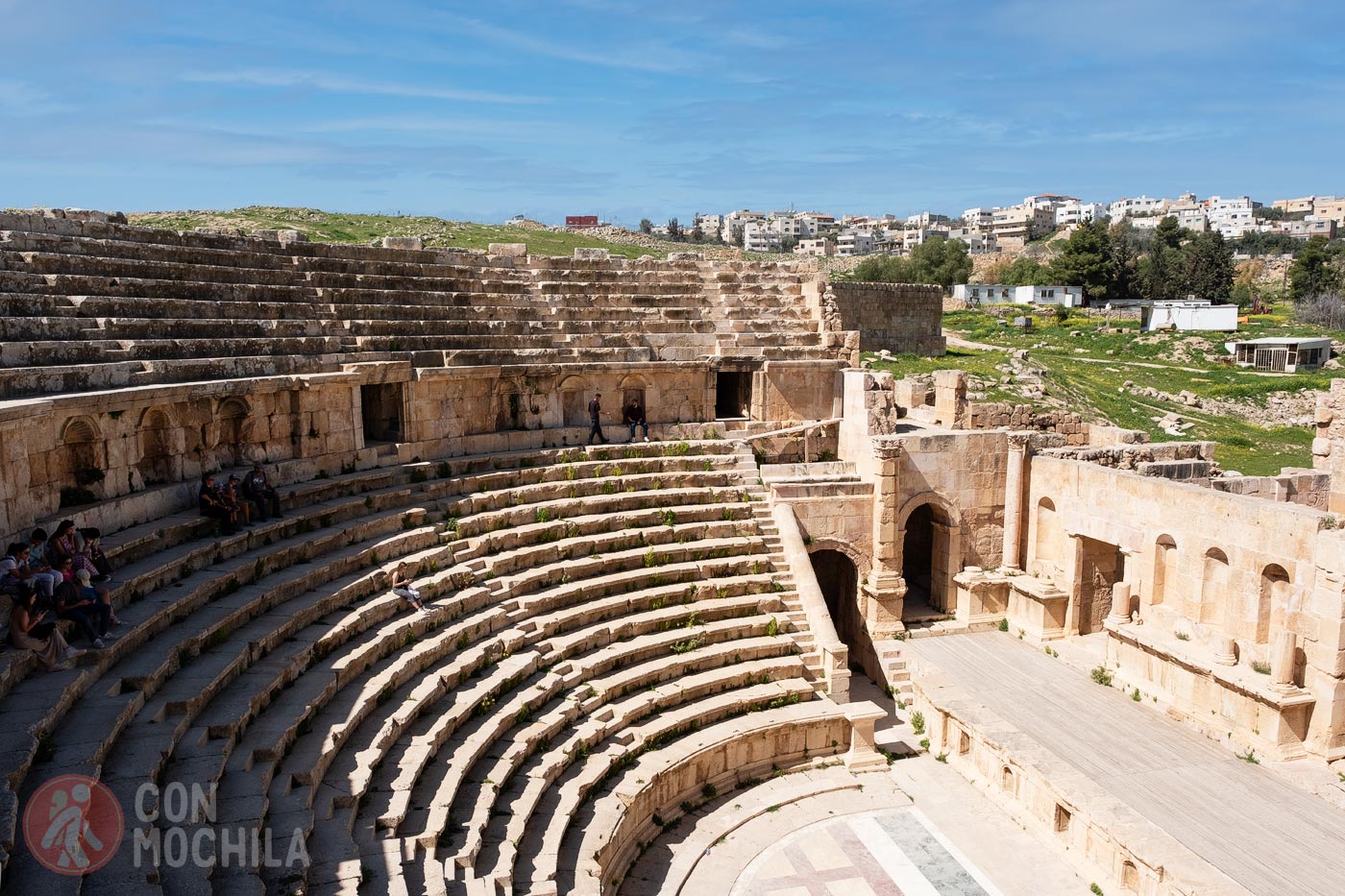
It is a reflection of the main pastimes of the Romans, since musical performances, recitations and songs were held here, and it was also used as a meeting place for the City Council.
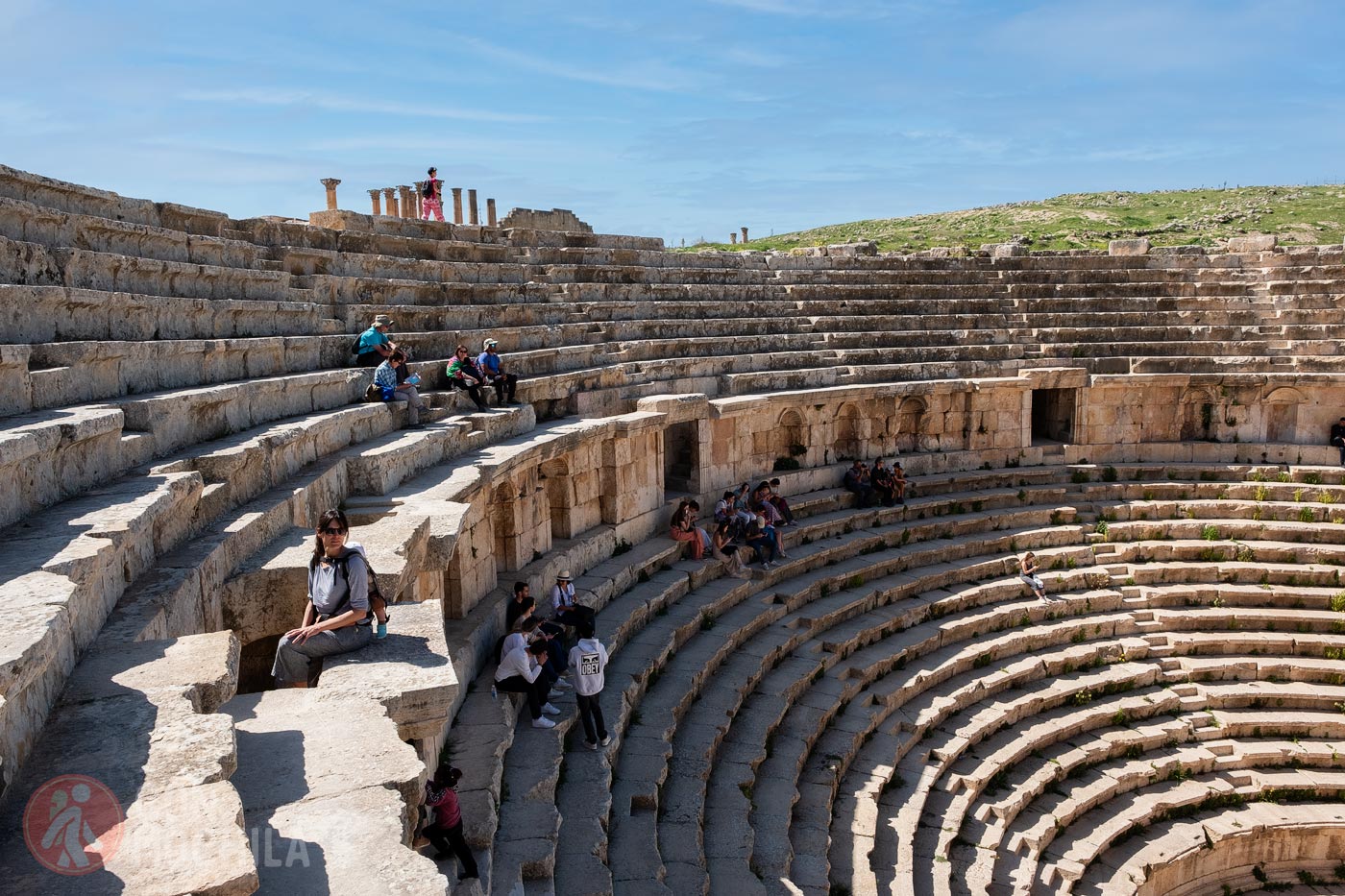
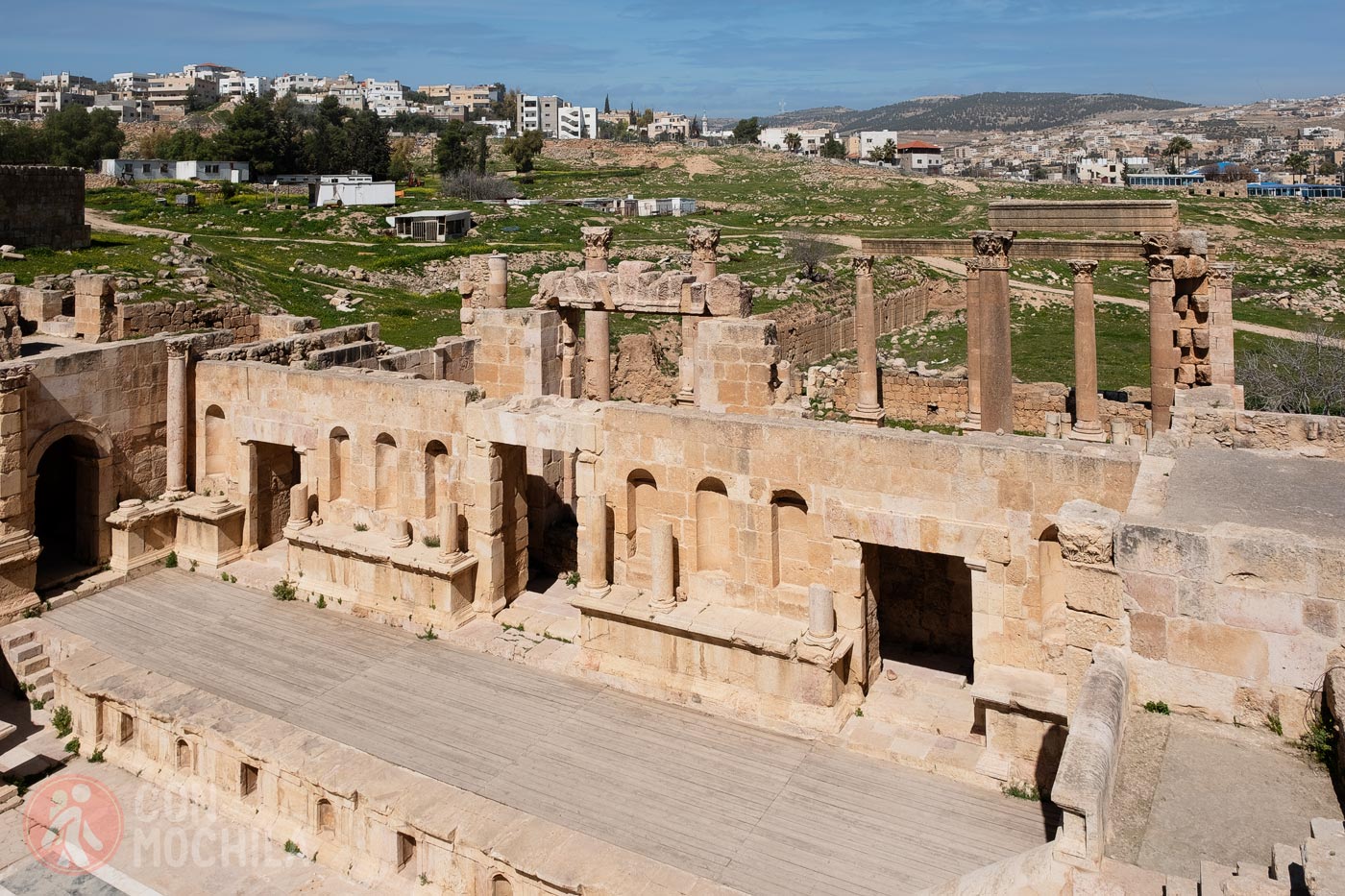
The entrance to the North Theatre is on the North Decumanus, where there is a colonnaded plaza and stairs leading up to the venue.